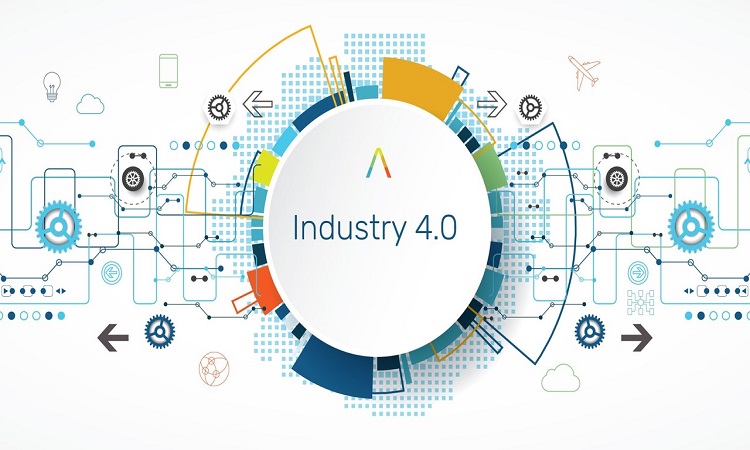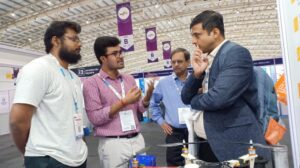Stepping into the fourth industrial revolutions – Industry 4.0

Authored by Aaditya Damani, Managing Director, Autosys Industrial Solutions Pvt. Ltd.
Industry 4.0, a historic paradigm shift that enhances the manufacturing shop floor to another spectrum. Industry 4.0 comprises the use of smart devices and IoT enabled equipments that are connected to the internet at every point of time communicating terabytes of data. I shall be explaining two different aspects of Industry 4.0, the Digital Factory and the Remote Machining but before we understand that let us traverse through our footprints on the three industrial revolutions we have witnessed so far.
Industry 1.0
Water – and steam-powered machines were developed to aid workers back in 1800s. As production capabilities increased, business also grew from individual owners to organisations with employees and establishments catering to the demands on the customers.
Industry 2.0
By the early 20th century, electricity had evolved to become the primary source of power. The use of electricity was seamless as compares to water and steam and empowered the businesses to concentrate power sources to individual machines. Eventually machines were designed with an inbuilt power sources making them more robust and portable. Now that the machines were self sufficient, the focus shifted towards enhancing their performance which gave rise to various programs to concentrate more on the effectiveness.
Industry 3.0
In the late 20th century, the industry saw various innovations and inventions of electronic devices such as transistors, integrated circuit chips which enhanced the machine productivity by making them completely automatic or operator independent. Use of computers and numeric controllers was introduced which gave allowed the machine to be programmed as per various requirements and facilitated smarter manufacturing. Various software systems were introduced to capitalise on the hardware, enterprise resource planning and other management software tools were put to use to create awareness of various on goings on the shop floor. This helped in reduction of operation cost, better planning and conduction of routine maintenance activities to keep the machines fit.

Industry 4.0
IoT ( Internet of Things ) equipments are used to connect the manufacturing machines to facilitate communication of the shop floor data to remote cloud server that act as data warehouses. The information is then crunched, analysed and is used to make better business decisions. The fourth industrial revolution comprises of the use of such IoT devices, robotics, artificial intelligence and other analysis tools to not only automate different business processes but also help understand the scope of improvements. Cognitive technology is used for various applications that formulate the fourth industrial revolution in its entirety. Digital Factory / Smart factory being one of the key components of the this.
Digital Factory / Smart Factory
Digital Factory or Smart Factory is where every machine equipment is connected to the internet and there is a consolidated view and analysis of every process conducted in the manufacturing process. There is an end to end digitalisation, comprehensive analysis and spontaneous awareness of every activity. There are various aspects that can be tapped on this front which are detailed below :
Maintenance Management – An overall outlook on the maintenance of the machines, both preventive and pre-emptive to help smooth and seamless operation and reduction in an overall downtime. The use of artificial intelligence shall be invoked eventually when it is fed on different aspects to start predicting the maintenance schemas.
Machine Management – This is a critical part which formulates as a history card of the machine giving out various data parameters of the machine since inception. Daily production, maintenance activities, operators and jobs can be further traced out from the machine history card.
Operator Management – This keeps a check on various operators working on the shop floor across different machines. The tool can be further used to understand downtime caused by the operators, efficiency of different operators performing the same job on same machine and their incentives.
Job / Production – This is a detailed view of various jobs being performed, quantity of production yielded, average cycle time, ideal cycle time, and other physical parameters like temperature, pressure if relevant. With this information we can further identify and compare the actual against the ideal and monitor the quality of different jobs / batches.

Remote Machining – Empowering the machine with an inbuilt wireless adapter to continue communicating with the servers thus share critical information and at the same time facilitating access to the machine from a remote location. This can reduce tremendous amount of cost and time spent to troubleshoot different breakdowns on the machine. The remote machining could comprise of the following threads –
Remote Troubleshoot – In events of machine breakdown, the engineer from the machine OEM need not physically travel to the machine location but just simply seek remote access to the machine which shall help him understand the reasons of the breakdown and the recovery assistance can be fetched from the archives maintained.
Remote Programming – Programming of the machine for different parts or replicating the same program through different machines in a different shop floor can be a tedious activity. Here the programmer has the facility to connect to number of machines and create a pool at the same time and burn the same program to the pool, which programs all the machines in the pool with the same code in a single effort.
This facility can be used not only to program the machines, but also to reprogram them, fix any programming bugs, or re-engineer the code from different development and design outputs.






